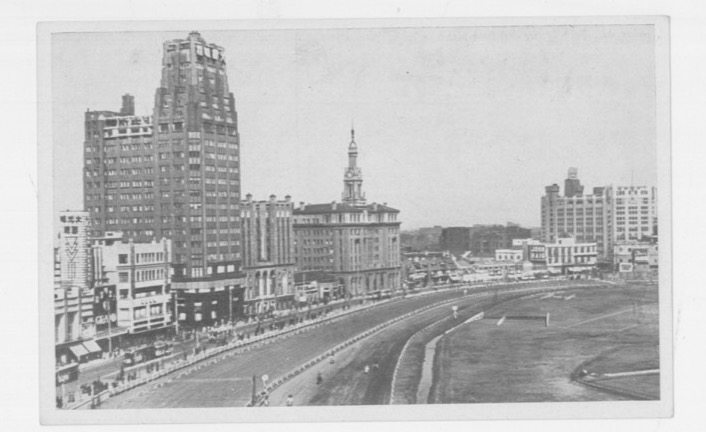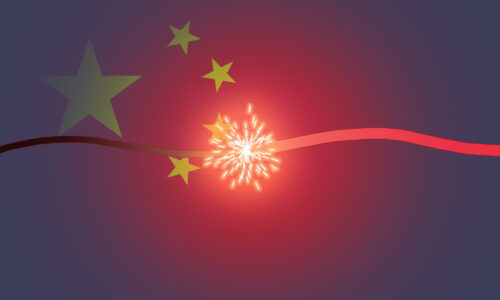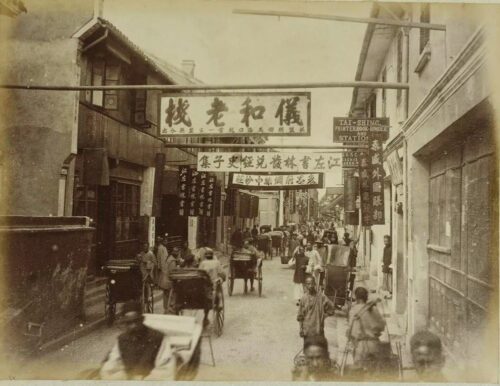Shanghai’s history of race, privilege, and escapism explored in ‘Champions Day’
James Carter examines Shanghai’s colonial past through the lens of a single event — its Champions’ Stakes horse race — and in doing so, paints a rich picture of the politics that enabled Shanghai’s so-called “golden era,” as well as the racial dynamics and social rituals that shaped daily life.

On its surface, James Carter’s Champions Day tells the history of a semi-annual horse race that, by the 1930s, had established itself as a fixture of Shanghai life, regularly attended by an eclectic ensemble of tens of thousands, both Chinese and foreign. But in tracing the lives and disparate fates of these motley racegoers, Champions Day quickly becomes a far deeper exploration of the racial dynamics, routines, and rituals that formed the contours of Shanghai life in the run up to the Second World War.
Carter’s depiction of Shanghai is that of a city divided. Yet the story is not one of thrilling wartime resistance, which is frequently associated with the era (perhaps best encapsulated by the film and novella Lust, Caution). Instead, Shanghai is severed along lines of race and class.
The Opium Wars and vehement competition for access to Chinese markets had meant that although Chinese sovereignty was never officially ceded, a system of extraterritoriality had been established over large areas of Shanghai. In the British and American jurisdiction, known as the International Settlement, and various other “foreign concession” zones, real control resided with foreign powers. Nationals of these countries were subject only to their own laws (although as Carter points out, many of Shanghai’s foreign elite, whom he collectively refers to as the white Shanghailanders, were really free from any law), but even Chinese inside the International Settlement would not be subject to the regular Chinese legal process.
The 1920s to 1930s is widely celebrated, at least among those in the West, as Shanghai’s “golden era” due to its glitzy cosmopolitanism. Carter notes that it was during this period that China, and in particular Shanghai, with its exotic “East-meet-West” fashion and art deco architecture, began to occupy increasing importance in the Western imagination. Carter asserts that, in reality, “white men held too much power to call the city truly cosmopolitan.” Even wealthy, bilingual Chinese like Ing Tang (a local fashion icon and talented performer once offered a lead role on Broadway) and Nates Wong (a lawyer, translator, and publisher), who moved effortlessly between Chinese and foreign circles, remained barred from becoming full members of the Shanghai Race Club despite the fact that Chinese made up the vast majority of the Champions Day audience.
Many European and American Shanghailanders were born into wealth. Other European and American racecourse regulars, like Robert Aitkenhead, were from far more modest backgrounds. But regardless of economic background, all could enjoy a life of decadence well beyond what they could ever imagine for themselves back home (something that arguably remains the case for many “expats” in China today). While some foreign Shanghailanders were sympathetic to China’s cause, such as Niles Moller, who rejected his European citizenship and the privileges of extraterritoriality that came with it, these people were the exception. Carter illustrates how white Shanghailanders formed a class of their own, united not by economic background but by race and proximity to Britain. Although, as Carter makes clear, race itself is also something of a fallacy: many prominent “white” and “Chinese” Shanghailanders were really biracial, with compounding privileges, or the lack thereof, determining which category people fell into.
The book never shies away from detailing the white Shanghailanders in all their frivolous decadence. Free from the shackles of housework (it was normal for foreign residents to have at least one servant) the Shanghailanders, who included in their ranks Cornell and Estelle Franklin (the latter of whom would go on to become Estelle Faulkner after marrying writer William Faulkner), typically spent their Saturday nights drinking at the Race Club or another hotel party, dancing to jazz and drunkenly airing dirty laundry in dramatic public spats.
Elsewhere in the book, the white Shangailanders’ preoccupation with escapist pleasures appears less innocuous, standing in jarring juxtaposition to the grim magnitude of the period’s politics. In a glaring example of just how different life for foreigners and Chinese could be in the city, Carter describes the foreigners’ reactions to the Battle of Shanghai and what is now known as “the rape of Nanjing” (where Japanese troops seized control of much of Shanghai and terrorized residents in neighboring Nanjing, killing up to hundreds of thousands of Chinese civilians in the process). In the aftermath, foreigners not only rushed across Shanghai to survey the damage, but crowded into sukiyaki houses. In contrast, Chinese residents could travel only with special exemptions. Rather than lamenting the loss of life, one newspaper exclaimed that “foreigners had not tasted bona fide Japanese dishes for more than four months.” Later, the fact that American and British Shanghailanders continued to dress up and race horses even after the International Settlement succumbed to Japanese occupation would draw ire from their peers back home, who saw the Shanghailanders as failing to do their bit when it came to resisting the Axis powers.
The making of Chinese Shanghai
While Chinese may have been banned from acquiring formal membership at the Shanghai Race Club and lacked insulation from much of the violence that punctuated their own lives, Chinese Shanghailanders were not passive victims of colonial exploitation. Many wealthy Chinese Shanghailanders set about constructing a “Chinese Shanghai” to rival the International Settlement. Wealthy Chinese Shanghailanders, such as Zhu Baoshan and Tse-Ung Yih, established a rival race track, the International Recreation Club, and used it as leverage to increase the presence of Chinese participants and spectators at the Shanghai Race Club. Others, such as Dayu Doon, a Tsinghua University graduate who went on to study architecture in New York, worked to transform Shanghai’s Jiangwan area into a “modernist utopia” capable of rivaling the architecture of the International Settlement.
Similarly, and in a way that doesn’t mask the extent to which foreign control was exploitative, Carter makes it clear that this isn’t all it was. The International Settlement was, after all, dominated by Chinese inhabitants, and European and American control enabled a vibrant social and cultural life comparatively free from the repressive ideology of the Japanese puppet government that controlled much of the rest of the city. Carter describes how Chinese office clerks, intellectuals (such as Nates Wong), artists, prostitutes, and priests lived side by side in the Settlement’s lilong alleyways, and would discuss “national and world politics” over cigarettes deep into the evening, while more radical residents would take advantage of the Settlement’s protection to conduct competing Guomindang and Communist Party activity.
Just as the races provided working-class Chinese attendees with a day of respite from the banality of factory work, the foreign concessions would also later provide a refuge to Chinese fleeing from elsewhere as Japan expanded its presence throughout China.
Contemporary Chinese history is often told as a narrative of political struggle and resistance against Western imperialist powers, Japan, and the Guomindang. Carter’s Shanghai history breaks from the conventional narrative. Yet it’s not that Carter isn’t concerned with the political: on the contrary, he explores politics in depth, but from the perspective of how this context played out on the daily lives of individuals.
Carter notes that the Shanghai Race Club clubhouse, which can still be found in its original West Nanjing Road location and currently houses the Shanghai Museum of History, is now widely regarded in China as the epitome of Western imperialism, and the white Shanghailanders who frequented it, parasitic. Yet, as Carter also observes, a small nostalgia industry continues to flourish around popular imaginings of 1930s Shanghai cosmopolitanism. Champions Day complicates both.
Champions Day: The End of Old Shanghai is available now through W. W. Norton.





